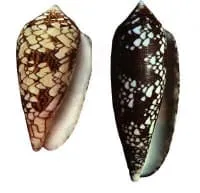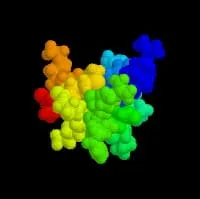Cone Snail Sting Overview
A cone snail has a cone-shaped shell, a fleshy foot, a head, and tentacles. Cone snails live in the Indian and Pacific Oceans, the Caribbean and Red Seas, and along the coast of Florida. They are not aggressive. The sting usually occurs when divers in deep reef waters handle the snails. Swimmers and snorkelers are unlikely to find cone snails in shallow intertidal waters. Their empty shells are prized items on sandy beaches.
Cone snail shells range in size from less than an inch to 9 inches long. The snail unwinds itself in the shell and comes out the opening. Much like a harpoon, a sharp venomous stinger stabs the snail's prey. Cone snails hunt worms and other snails. A few varieties of cone snails eat fish, and these are the most harmful to humans.
Avoid contact with these animals. The animal's harpoon can penetrate gloves. The toxin is similar to the paralytic toxin of the pufferfish and blue-ringed octopus.
Cone Snail Sting Symptoms
- Symptoms include intense pain, numbness, and tingling.
- Symptoms can begin within minutes or take days to appear.
- Severe cases of cone snail stings involve muscle paralysis, blurred/double vision, and respiratory paralysis, leading to death.
Cone Snail Sting Treatment
- To relieve pain, immerse the affected area in water as hot as is tolerable.
- Use the pressure-immobilization technique to prevent the venom from spreading through the body as much as possible:
- The extremity should be wrapped with a bandage in a style similar to wrapping a sprained ankle.
- Bind the limb firmly but do not block the circulation. Fingers and toes should remain pink.
- Leave bandages intact until medical care can be reached.
- Avoid movement.
- CPR may be necessary. Artificial respiration may save the person's life.
- Do not cut into the wound, apply suction, or use a tourniquet.
When to Seek Medical Care
- Seek medical treatment as soon as possible.
- Intensive care hospitalization, including use of a respirator, may be required.
For More Information - Web Links
The University of Edinburgh, Cone Snails
MedlinePlus, Marine animal stings or bites
Multimedia
Media file 1: Cone snail shells.

Media type: Image
Media file 2: Molecular model of cone snail toxin that blocks skeletal muscle sodium-channels, causing paralysis. Other toxins can block calcium channels and nicotinic acetylcholine channels in cardiac and nerve tissues.

Media type: Image
Synonyms and Keywords
wilderness: cone snail sting, cone snail sting, cone snail poisoning, paralytic toxin, toxin, pressure-immobilization

